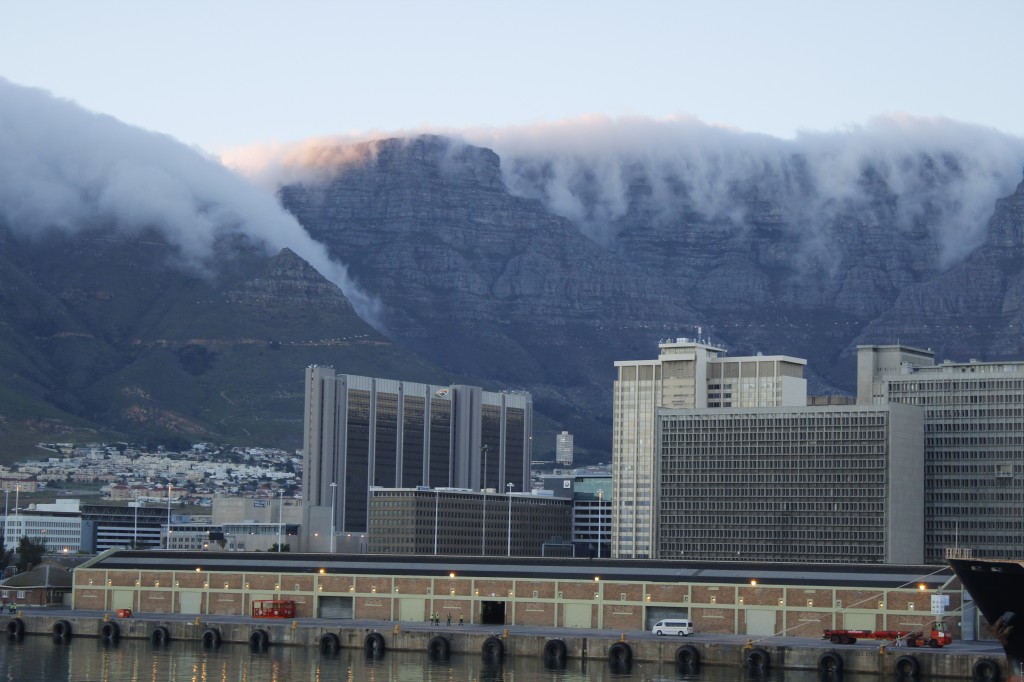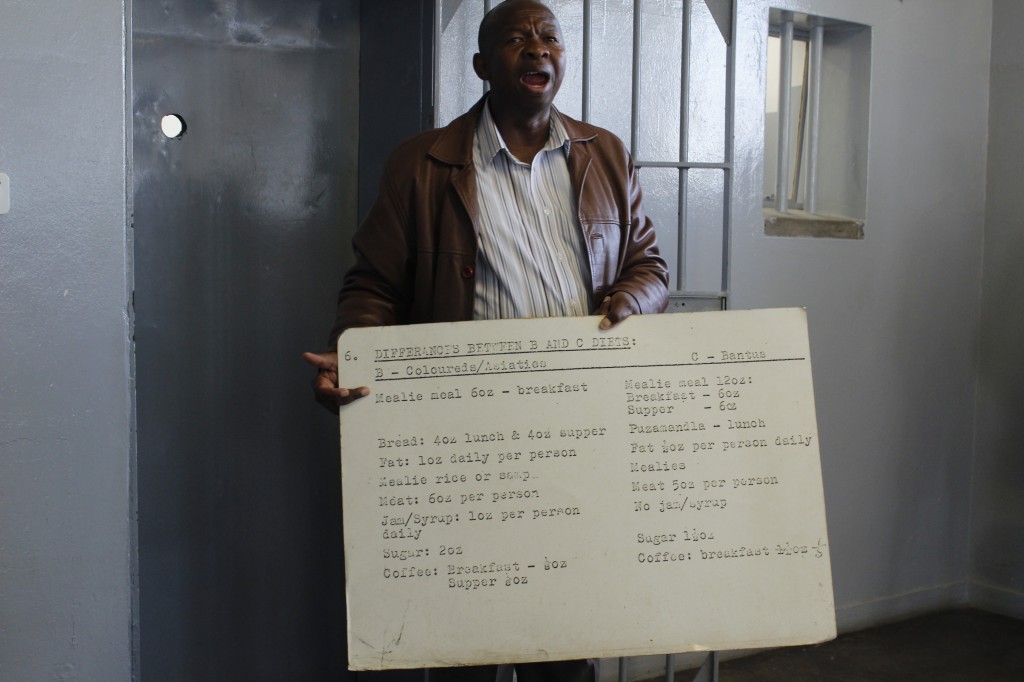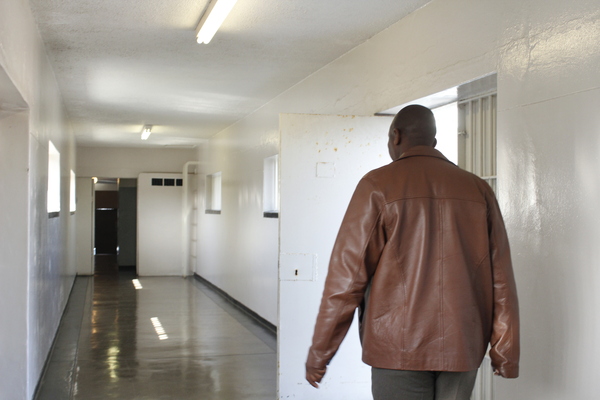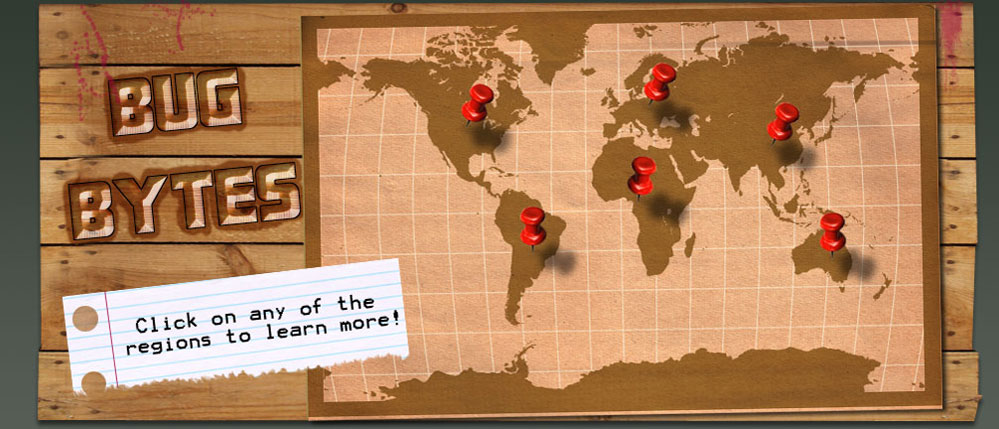With only one month left in our Semester at Sea voyage, everyone keeps asking me, “What’s your favorite country so far?”
Usually, I struggle with this kind of question, but for the most part, I think I have it figured out: South Africa.
From the second we arrived in Cape Town, I felt like South Africa punched me right in the face with how beautiful it is. We woke up extra early, at 5 a.m., to watch the city wake up as we pulled into port, and as the clouds parted and the sun rose over table mountain, I couldn’t believe how spectacular the scenery was.
 Scenery on our arrival into Cape Town
Scenery on our arrival into Cape TownThe first day we went out to tour Robben Island (we bought our tickets early online as it was a mad rush at the counter) and were given a tour of the place where Nelson Mandela was held for 17 years. It was interesting to see his small cell, and to imagine what it must have been like for black political refugees at that time, and we were given a guided tour around the prison by a former prisoner, who spent 7 years there for gathering Africans together to protest apartheid.
I don’t think I’ve ever understood the magnitude and the devastation of apartheid until now. On the Semester at Sea ship we were shown several documentaries about the injustices that occurred to blacks in South Africa, and walking through the dimly lit halls of the prison made me imagine the incredible amounts of torture and brutality that occurred there–some acts our guide was able to speak about, some he wasn’t.
 This sign shows the difference in meals between blacks and coloreds.
This sign shows the difference in meals between blacks and coloreds.He told us stories of racism that occurred on every level. For example, blacks were fed far less than asians, or those referred to as “coloreds.”
When they were disciplined, blacks were withheld food and water for far longer than any other race. They were forced to sleep in their mess, on the ground, with only a small mat and no blankets in temperatures that drop below freezing in the winter.
Blacks were forced to wear shorts, and short-sleeved shirts throughout the year, and were urinated on by the guards who perpetually tortured them.
When inspectors came to visit Robben Island, the prisoners were given long-sleeve shirts and pants to show how well they were being treated (those clothes were immediately taken back after the visit).
They were taken to the limestone field, where they worked long hours in the sun, with limestone which damaged many of their eyes.
It was harrowing, to be there, to walk the halls where Nelson Mandela lived for so long, where he wrote his autobiography, and to know, that after the Robben Island prison closed, it was still another 7 years before Nelson was released from yet another prison.
 It’s eerie walking through the halls of the prison on Robben Island
It’s eerie walking through the halls of the prison on Robben Island
And yet, the spirit of forgiveness is strong in South Africa, undoubtedly thanks to Mandela. It’s remarkable to me that these prisoners, who spent so much time here under the worst of circumstances, are now back on Robben Island, many of them even living on Robben Island with their families, walking groups of people through a museum that was once a living hell for them.
Today, former guards and former prisoners live together as a community on Robben Island.
It’s really a beautiful show of hope, of forgiveness and of strength.






